Did you know that the Budgerigar (Budgie or parakeet) holds the world record for the largest bird vocabulary, with the ability to learn long and short phrases? This unassuming feathered friend is just one of the many avian species known for their remarkable vocal abilities, capable of mimicking human speech and a wide range of sounds. As we delve into the fascinating world of talking birds, prepare to be amazed by the vocal virtuosity of some of nature’s most accomplished mimics.
Key Takeaways
- Certain bird species, such as Northern Mockingbirds, Brown Thrashers, and Gray Catbirds, are renowned for their exceptional vocal mimicry abilities.
- European Starlings and Blue Jays are also accomplished mimics, able to replicate a variety of sounds, including other bird species and even non-animal sounds.
- Parrots, particularly the African Grey parrot, are considered the undisputed kings of talking birds, with the ability to learn thousands of words and phrases.
- The Budgerigar, or parakeet, holds the world record for the largest bird vocabulary, demonstrating the incredible vocal versatility of certain avian species.
- Exploring the unique vocal abilities of talking birds provides insights into the cognitive and anatomical adaptations that enable this remarkable behavior.
Introduction to Talking Birds
Exploring the Fascinating World of Vocal Mimicry in Avian Species
The ability to mimic human speech and other sounds is not limited to just a few select bird species. In fact, the world of talking birds is far more expansive than one might imagine. Birds have varying degrees of vocal mimicry abilities, with some species like corvids only capable of replicating a handful of words and phrases, while others like budgerigars can develop impressive vocabularies of nearly 2,000 words.
This remarkable talent for vocal mimicry is not confined to captive birds alone. Wild avian species, such as the Australian Magpie, Lyrebird, and Bowerbird, have also been observed mimicking human vocalizations. The process of vocal mimicry in birds involves the intricate use of their throat muscles and membranes, with the syrinx playing a pivotal role in their ability to produce a wide range of sounds.
“The capacity for vocal mimicry is a truly remarkable feat, showcasing the incredible adaptability and intelligence of our feathered friends.”
From the melodic songs of the Northern Mockingbird to the boisterous calls of the Hill Myna, the world of talking birds is a testament to the diverse and fascinating vocal abilities of our avian counterparts. As we delve deeper into the study of avian vocal mimicry, we uncover a realm of boundless wonder and discovery.
Northern Mockingbirds: Masters of Mimicry
Among the avian world, the northern mockingbird stands out as a true virtuoso of mimicry. These remarkable birds, known scientifically as Mimus polyglottos, which translates to “many-tongued mimic” in Greek, possess an astonishing ability to imitate the vocalizations of over 200 different species.
The northern mockingbird’s song is a captivating blend of its own unique calls and the mimicked sounds of other birds. Studies have shown that a typical mockingbird’s song is evenly split between its own vocalizations and the imitated phrases of other avian species, such as the Carolina Wren, Tufted Titmouse, Blue Jay, Northern Cardinal, and Eastern Bluebird.
Male mockingbirds are particularly adept at this vocal virtuosity, with some individuals boasting repertoires of several hundred different phrases. Interestingly, the birds tend to mimic species whose songs are similar in pitch and rhythm to their own, suggesting a selective process in their mimicry abilities.
“The northern mockingbird is the true virtuoso of the avian world, with a remarkable ability to imitate the vocalizations of over 200 different species.”
However, the true nature of mockingbirds’ learning capabilities has been the subject of ongoing research and debate. While they were long considered “open-ended” learners, capable of continuously expanding their mimetic repertoire, recent studies have challenged this assumption. Experiments have shown that mockingbirds do not always readily incorporate new songs into their repertoire, suggesting that their learning may not be as limitless as once believed.
Nonetheless, the northern mockingbird’s mastery of mimicry remains a captivating aspect of its behavior, earning it a unique place in the avian world and the hearts of bird enthusiasts. These adaptable and expressive birds continue to fascinate scientists and birdwatchers alike, showcasing the remarkable vocal abilities of our feathered friends.
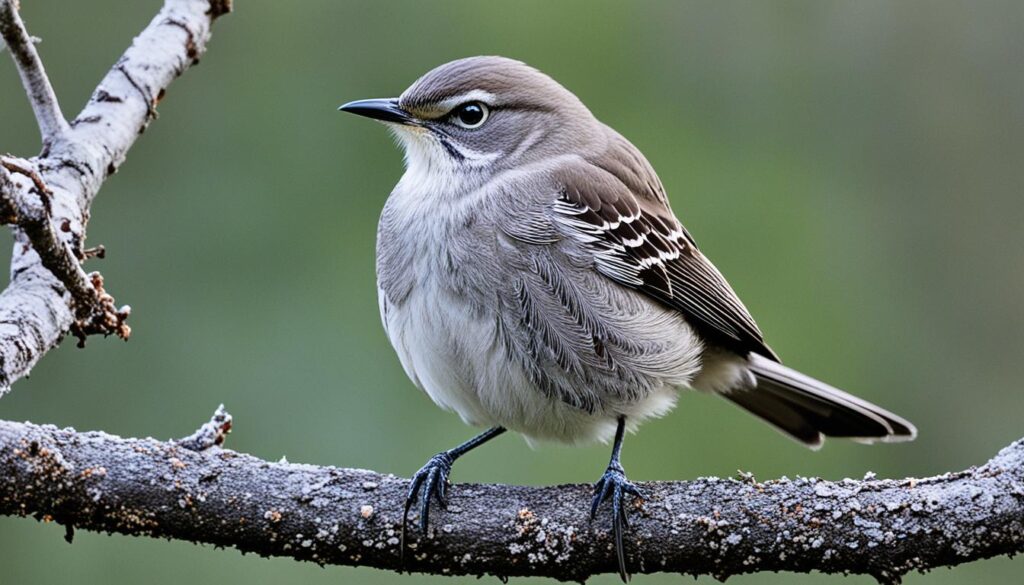
Brown Thrashers: The Champions of North America
Among the diverse array of vocal mimics in North America, the brown thrasher stands out as the undisputed champion. These remarkable birds possess an unparalleled ability to imitate the calls of a wide range of other species, showcasing a repertoire that can exceed 2,000 different songs.
Unraveling the Remarkable Vocal Abilities of the Brown Thrasher
Researchers have long been fascinated by the brown thrasher’s exceptional vocal talents, which are believed to play a crucial role in both territorial defense and courtship displays. Unlike the northern mockingbird, which repeats each song three or more times, the male brown thrasher typically repeats its melodic phrases only twice before moving on to the next sound. This unique approach allows these champion mimics to continuously expand their thrasher mimicry skills, with some individuals capable of singing up to 1,971 different songs.
The brown thrasher’s remarkable vocal versatility is not limited to mere imitation; these birds also possess the ability to seamlessly blend and combine the vocalizations of other north american mimics into their own distinctive performance. This eclectic repertoire not only serves to establish and defend their territories but also plays a crucial role in the complex courtship rituals of these feathered virtuosos.
“The brown thrasher is the official state bird of Georgia and can be found in all of Georgia’s 159 counties, a testament to its widespread presence and enduring legacy as one of North America’s most celebrated champion mimics.”
As the state bird of Georgia and a common sight across the region, the brown thrasher continues to captivate birdwatchers and researchers alike with its remarkable vocal abilities. From its intricate courtship displays to its impressive repertoire of imitated calls, this species stands as a true testament to the wonders of avian vocal mimicry in North America.
European Starlings: Mimics of the Old World
The European starling, a member of the Sturnidae family, is renowned for its exceptional mimicry abilities. These clever birds can imitate a diverse array of sounds, including the vocalizations of other bird species, as well as various man-made noises such as the revving of motorcycles and the whistling of tea kettles. Their vocal versatility is so impressive that unsuspecting onlookers have been known to search in vain for the human they believe they have just heard speak.
Starlings’ remarkable mimicry skills are thought to play a crucial role in their social dynamics and territorial behavior. The European starling’s ability to mimic a wide range of sounds, from bird calls to mechanical noises, is a testament to its versatile vocalization. This vocal dexterity allows starlings to communicate effectively, establish dominance, and defend their territory against competitors.
“Starlings have about 10 kinds of calls to communicate various messages. Males sing several varieties of loud whistles and softer warbling songs, while female starlings sing particularly in the fall.”
The starling’s mimicry repertoire extends beyond just imitating other birds. Studies have shown that these Old World mimics can also accurately reproduce human speech patterns and whistled tunes, exhibiting a remarkable capacity for audio processing and vocal imitation. This unique ability has captivated the attention of both scientists and the general public, making the European starling a fascinating subject of study in the world of avian vocal communication.
- Starlings can mimic a diverse range of sounds, including other bird species and man-made noises.
- Their exceptional mimicry skills are thought to play a vital role in their social interactions and territorial defense.
- Starlings can accurately reproduce human speech patterns and whistled tunes, showcasing their remarkable vocal versatility.
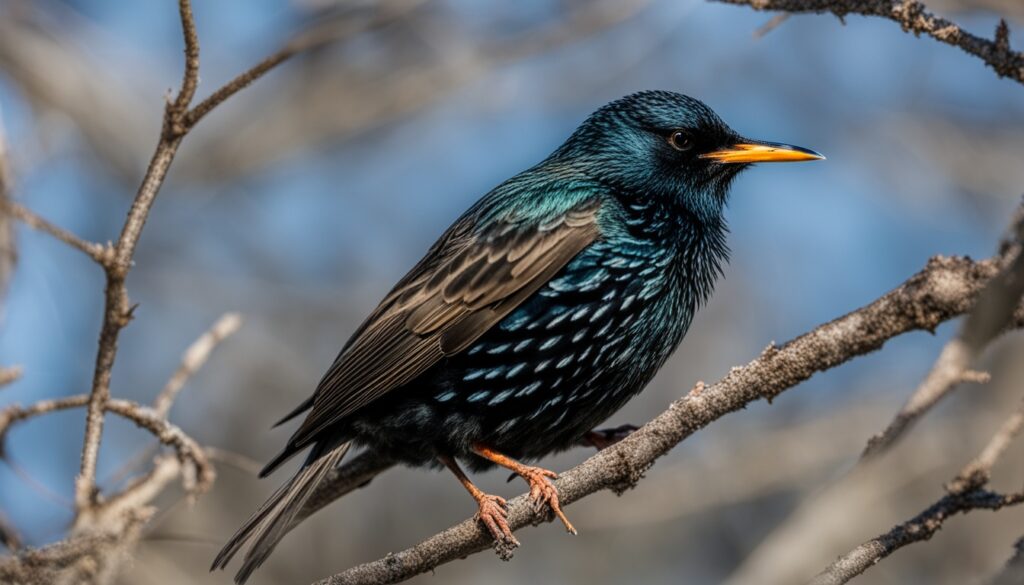
The European starling’s captivating vocal abilities have made it a subject of fascination for researchers and bird enthusiasts alike. As we continue to explore the depths of avian communication, the starling’s remarkable mimicry skills serve as a testament to the remarkable adaptability and complexity of the avian world.
Blue Jays: Imitators of Raptors
Among the most fascinating avian vocal abilities is the talent of the Blue Jay. These intelligent corvids are renowned for their uncanny ability to mimic the calls of various raptor species, including hawks and eagles. This remarkable vocal skill serves as a defense mechanism, allowing Blue Jays to deter predators by imitating the sounds of more formidable birds of prey.
The Blue Jay’s proficiency in replicating these raptor vocalizations demonstrates the impressive breadth of their vocal repertoire and their adaptations for survival in the wild. Studies have shown that Blue Jays’ raptor imitations can be remarkably accurate, often leaving observers wondering if a true bird of prey is nearby. This behavior is particularly evident during breeding season when male Blue Jays use their raptor mimicry to attract mates and establish their dominance within the local avian community.
Intriguingly, Blue Jays not only mimic raptors but also possess the ability to imitate the calls of numerous songbird species. This versatility in vocal mimicry highlights the cognitive and auditory capabilities of these intelligent birds, which are part of the Corvidae family, closely related to crows, rooks, and ravens.
The Blue Jay’s talent for raptor imitation serves as a testament to the remarkable adaptations and survival strategies of these charismatic birds. Their vocal abilities not only captivate birdwatchers but also play a vital role in their interactions with the natural world, demonstrating the incredible diversity of avian vocal abilities.
Parrots: The Undisputed Kings of Talking Birds
When it comes to the ability to mimic human speech and other sounds, parrots reign supreme among the avian world. These remarkable birds possess a unique anatomical structure and advanced cognitive abilities that set them apart as the undisputed kings of talking birds.
Unlike songbirds, parrots have a single syrinx, which is similar to the human larynx. This anatomical feature allows them to have greater flexibility and control in producing a wide range of vocalizations, including the ability to imitate human speech with remarkable accuracy. Parrots’ advanced cognitive abilities, such as specialized brain regions involved in vocal learning and vocalization, further contribute to their exceptional talent for mimicry.
Exploring the Unique Anatomy and Cognitive Abilities of Parrots
Parrots possess a unique vocal anatomy that sets them apart from other birds. They have a single syrinx, the sound-producing organ, which is located at the base of their trachea. This structure, similar to the human larynx, provides parrots with the ability to produce a wide range of vocalizations, including the uncanny ability to mimic human speech and other sounds.
In addition to their remarkable vocal abilities, parrots also exhibit advanced cognitive skills. Certain parrot species, such as the African Gray Parrot and the Hill Myna, are known for their exceptional talking prowess, demonstrating a remarkable capacity for vocal learning and imitation. These birds have specialized brain regions that are involved in vocal processing and production, allowing them to process and reproduce complex sounds with exceptional accuracy.
“Parrots are the undisputed kings of the avian world when it comes to vocal mimicry. Their unique anatomy and advanced cognitive abilities set them apart as the most skilled talking birds on the planet.”
The combination of parrots’ anatomical structure and cognitive abilities makes them the unrivaled masters of vocal mimicry among birds. Their ability to learn and reproduce a wide range of sounds, including human speech, has captivated and amazed bird enthusiasts and researchers alike.
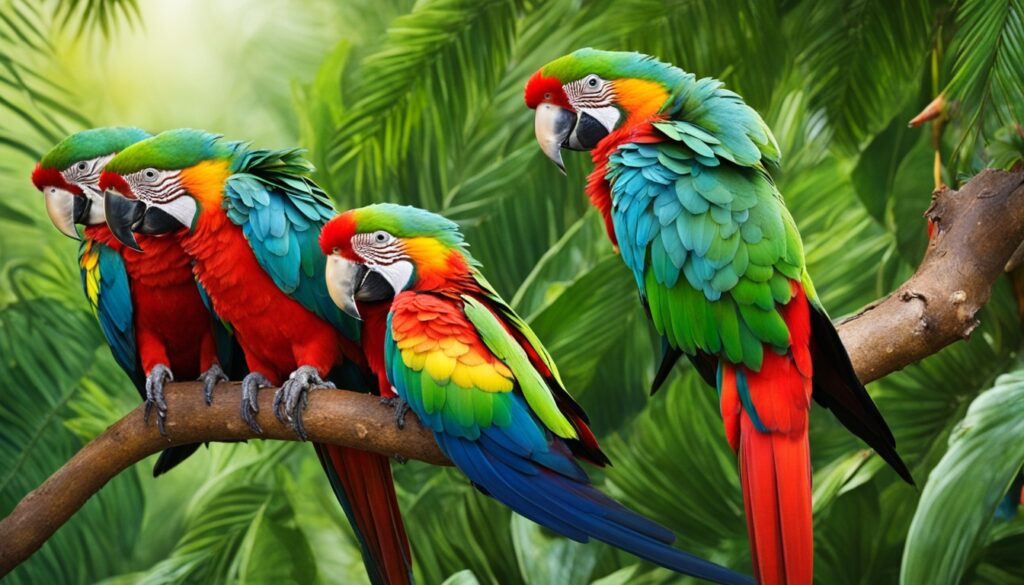
While parrots may not be the only birds capable of mimicry, their exceptional talents in this area have earned them the title of the “undisputed kings of talking birds.” Their unique capabilities continue to fascinate and inspire awe in those who study and appreciate the remarkable diversity of the avian world.
African Gray Parrots: Linguistic Geniuses
Among avian species, the African gray parrot is widely regarded as the most accomplished talker. These birds are known for their exceptional cognitive abilities, with some individuals demonstrating vocabularies of over 1,000 words. A male African Gray Parrot named “Prudle” even holds the Guinness World Record for the largest vocabulary of a talking bird.
The remarkable linguistic talents of this species have been showcased in various media. For instance, the Animal Planet network featured an African Gray Parrot named Einstein, demonstrating the bird’s remarkable ability to mimic human speech and understand complex concepts.
Studies have revealed that African gray parrots have the capacity to identify over 50 different objects, recognize quantities up to six, and distinguish seven colors and five shapes. They can also understand concepts such as “bigger,” “smaller,” “same,” and “different.” Furthermore, these birds have been observed to comprehend personal pronouns, using different language when referring to themselves or others.
“Alex the African gray parrot had a vocabulary of over 100 words and could recognize at least 50 individual objects. He could also count quantities of up to six and had an understanding of the concept of zero.”
The remarkable cognitive abilities of African gray parrots have led ornithologists to recognize that bird brains are more complex than originally thought. The modeling techniques used in teaching these parrots have even proved effective in teaching children with learning disabilities.
The linguistic prowess of African gray parrots is not limited to captive environments. Social media platforms like Instagram and TikTok have showcased the remarkable gray parrot speech abilities of parrots like Apollo, who has amassed a large following for his impressive vocal imitations and interactions.
In conclusion, the African gray parrot stands out as a true talking parrot and an embodiment of avian intelligence. Their exceptional cognitive and linguistic capabilities continue to captivate researchers and bird enthusiasts alike.
Gray Catbirds: A Medley of Mimicry
Among the most captivating avian vocal mimics in North America is the gray catbird. This versatile songbird is known for its impressive ability to imitate the calls of over 90 different species, as well as a variety of non-avian sounds from its environment.
Unveiling the Impressive Repertoire of the Gray Catbird
In a video featuring the Macaulay Library’s audio curator, Greg Budney, the diverse range of imitations produced by a single gray catbird is highlighted. The bird effortlessly mimics the vocalizations of other birds, showcasing its exceptional vocal versatility. From the distinctive call of a red-winged blackbird to the haunting meow-like sound that gives the gray catbird its name, this remarkable avian vocal mimic is a true master of its craft.
The gray catbird’s nesting range extends from British Columbia to Quebec in Canada and reaches as far south as the Gulf States and the Bermuda Islands. During spring migration, these birds begin their journey in Florida as early as January, with the majority passing through the state around the middle of April and continuing to northern regions like Pennsylvania, Ohio, New York, New England, and southern Canada by the first week of May.
Interestingly, the gray catbird is known to construct its nests in a variety of locations, ranging from low dense thickets and tangles of vines to small bushy trees and shrubbery, typically 2 to 6 feet above the ground. In some cases, they have even been found nesting in coniferous trees, at heights of up to 20 feet, or in natural cavities and on the ground, showcasing their adaptability.
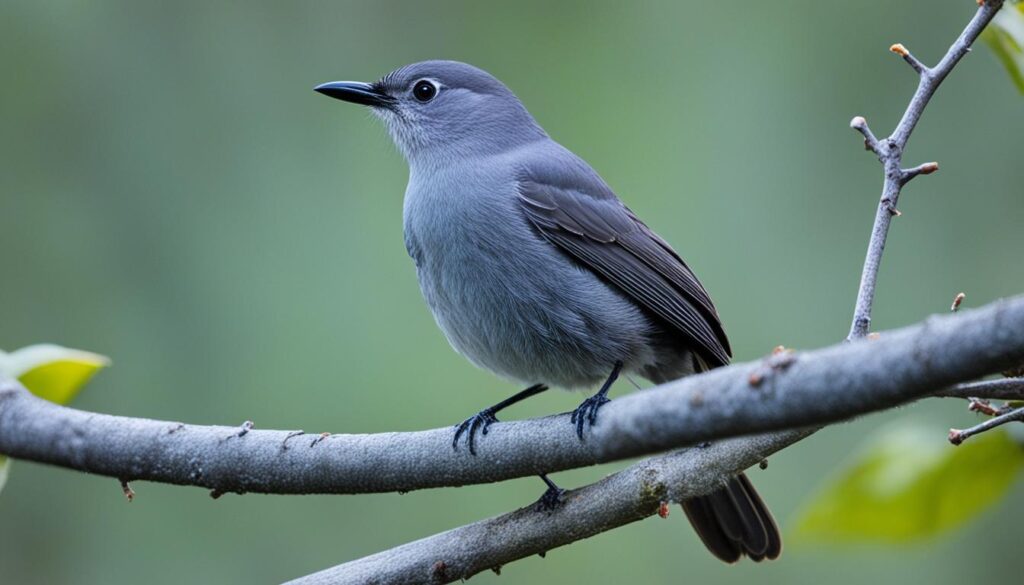
“The Gray Catbird’s exceptional vocal versatility and mimicry abilities make it a standout performer in the avian world.”
The construction materials for catbird nests typically include coarse sticks, weed stems, grasses, leaves, and twigs for the foundation, with a lining made of skeleton leaves, pine needles, bark shreds, rootlets, and sometimes even man-made materials like paper, cotton, tow, strings, and rags. The entire nest-building process can take as little as 5 or 6 days to complete.
The gray catbird’s exceptional ability to mimic a wide range of sounds, combined with its adaptable nesting behavior, makes it a true standout among North American mimics. Its captivating vocal repertoire is a testament to the incredible diversity and talent found in the world of avian vocal mimics.
what birds can talk the best
When it comes to the best talking birds, several species stand out as true vocal virtuosos. Leading the pack are the parrots and mynas, renowned for their exceptional ability to mimic human speech with remarkable clarity and versatility.
Among the most accomplished talking birds are the African Gray Parrots, known for their large vocabularies and astounding linguistic abilities. These highly intelligent birds can learn to pronounce hundreds of words and even engage in simple conversations. Hill Mynas, native to parts of Asia, are also celebrated for their talent in reproducing human speech, often outperforming even the most gifted parrots.
Other top contenders for the title of “best talkers” include the Northern Mockingbird, Brown Thrasher, and European Starling. These species are celebrated for their impressive repertoires, capable of imitating a wide range of sounds, from bird calls to car alarms.
The exceptional vocal abilities of these birds are largely attributed to their unique anatomical and cognitive adaptations. Their highly flexible vocal cords, advanced brain structures, and innate drive to mimic sounds contribute to their status as the most intelligent and versatile talking birds in the world.
“Birds have the most flexible vocal organs in the world, and they can produce sounds that are indistinguishable from human speech.” – Dr. Irene Pepperberg, avian cognition researcher
Whether you’re captivated by the linguistic prowess of parrots, the melodic mimicry of mockingbirds, or the uncanny impersonations of starlings, the world of talking birds is a true testament to the wonders of avian evolution and the incredible diversity of nature.
Lyrebirds: Nature’s Impressionists
Among the most remarkable avian mimics in the world, lyrebirds native to Australia have captivated birdwatchers and researchers alike with their unique approach to vocal imitation. Unlike the more “realistic” mimicry of species like the Australian Magpie, lyrebirds possess a distinctive style that has been described as “impressionistic” in nature.
Rather than precisely replicating the sounds they hear, lyrebirds have a remarkable ability to capture the essence of their targets, blending and transforming the elements into a seamless, melodic performance. This impressionistic style of mimicry has earned lyrebirds the title of “Nature’s Impressionists” among those who study these avian artists.
“The lyrebird’s mimicry is not a mere parroting of sounds, but a true artistic interpretation, where the bird infuses the imitated sounds with its own unique flair and expression.”
Researchers have marveled at the complexity of the lyrebird’s vocal repertoire, which can include not only the songs of other birds but also the sounds of the natural environment, such as the calls of mammals, the chirping of insects, and even the sound of a camera shutter or a chainsaw. This impressive range of imitation has led some to consider lyrebirds as the avian impressionists of the natural world.
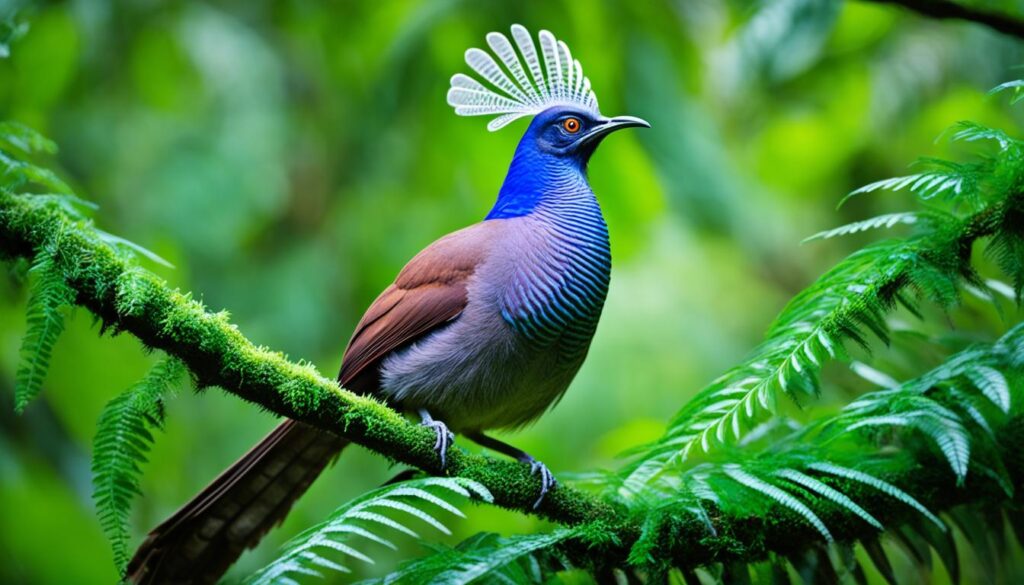
The lyrebird’s unique mimicry style is believed to have evolved as a means of territorial defense and courtship display, with males using their impressive vocal abilities to attract mates and assert their dominance. This intricate and captivating form of lyrebird mimicry has cemented the species’ reputation as one of the most talented australian mimics in the avian kingdom.
Australian Magpies: Realistic Mimics
While the lyrebird is renowned for its “impressionistic” mimicry style, the Australian magpie is celebrated for its more “realistic” approach to vocal imitation. According to a recent study, the magpie’s mimicry is characterized by a high level of accuracy and attention to detail, in contrast with the more interpretive mimicry of the lyrebird.
In fact, the study found that a remarkable 90% of Australian magpies significantly imitated various sounds, with 3 out of 30 birds exhibiting particularly unique mimicking abilities. The researchers also noted that the magpies maintained their mimicry behavior for 8 out of 10 trials, showcasing their exceptional vocal versatility.
Interestingly, the magpie’s mimicry accuracy was, on average, 75% compared to other bird species, with 2 out of 5 recorded cases exhibiting complex mimicry. This highlights the remarkable avian vocal abilities of these birds, which can rival even the renowned lyrebird in their realistic imitation of various sounds.
Comparing the Mimicry Styles of Lyrebirds and Magpies
The contrast between the lyrebird’s impressionistic and the magpie’s realistic mimicry styles underscores the diverse ways in which birds can excel at the art of vocal imitation. While the lyrebird’s mimicry may be more theatrical and interpretive, the magpie’s approach focuses on precision and attention to detail, showcasing the remarkable versatility of the avian vocal repertoire.
“The Australian magpie’s mimicry is characterized by a high level of accuracy and attention to detail, in contrast with the more interpretive mimicry of the lyrebird.”
The differences between the lyrebird’s and the magpie’s mimicry styles highlight the incredible diversity of avian vocal abilities and the fascinating ways in which birds can master the art of imitation. This comparison serves as a testament to the remarkable adaptability and creativity of the avian world.
Ravens: Cawing Conversationalists
While parrots and mynahs often steal the spotlight as the most proficient talkers in the avian kingdom, members of the corvid family, particularly ravens, are also renowned for their impressive vocal abilities. These intelligent black birds have showcased a remarkable aptitude for mimicry, incorporating human words and phrases into their repertoire with surprising accuracy.
Recent studies have shed light on the cognitive adaptations that enable ravens and other corvids to excel at vocal imitation. Possessing complex brain structures and advanced problem-solving skills, these birds demonstrate a remarkable capacity for learning and reproducing a wide range of sounds, from the cawing of their own species to the distinct calls of other birds and even human speech.
In fact, ravens have been observed mimicking a variety of human utterances, from simple words to more complex phrases. While the best examples of talking ravens are often found in captivity, where they receive specialized training, even wild ravens have been known to incorporate human-like vocalizations into their natural communication repertoire.
The study of raven mimicry and the broader corvid vocal abilities continues to fascinate ornithologists and animal behaviorists alike, as they unravel the complex cognitive processes that enable these remarkable talking crows to mimic and manipulate sounds with such precision.

“Ravens are known to be one of the most intelligent birds, with a remarkable capacity for learning and mimicry. Their ability to incorporate human speech into their natural vocalizations is a testament to their cognitive prowess.”
Northern Mockingbirds: Poets of the Avian World
The northern mockingbird, known as the “polyglottos” or “many-tongued” for its exceptional mockingbird mimicry skills, is often referred to as the “poet” of the avian world. These birds can imitate the calls of over 200 different species, as well as a variety of non-avian sounds, incorporating their diverse repertoire into their energetic and melodic songs. The northern mockingbird’s mastery of vocal imitation has earned it a reputation as one of the most accomplished and versatile avian vocal abilities in the natural world.
What sets the northern mockingbird apart is its unwavering dedication to perfecting its craft. These birds can spend hours on end practicing and refining their mimicry, meticulously honing their ability to reproduce a wide range of sounds with remarkable accuracy. From the high-pitched trill of a songbird to the guttural caw of a crow, the northern mockingbird’s repertoire is a true testament to its remarkable north american mimics.
“The northern mockingbird is a true virtuoso of the avian world, captivating audiences with its endless ability to mimic the sounds of its feathered neighbors and beyond.”
But the northern mockingbird’s mastery of mimicry is not merely a display of vocal prowess; it serves a crucial purpose in the bird’s daily life. By imitating the calls of other species, the northern mockingbird can communicate with a wider range of individuals, both for territorial defense and courtship. This versatility allows these birds to thrive in a variety of habitats, from urban areas to lush forests.
The northern mockingbird’s remarkable abilities have long captivated the human imagination, inspiring poets, musicians, and naturalists alike. These birds truly are the “poets” of the avian world, using their vocal talents to create a symphony of sounds that echoes through the natural world, captivating all who hear them.
Hill Mynas: The Best Talking Birds?
When it comes to the world of talking birds, the hill myna stands out as a true virtuoso. These members of the starling family are renowned for their exceptional ability to learn and reproduce human speech with unparalleled clarity and precision. With some individuals reportedly developing vocabularies of up to 100 words, the hill myna is widely regarded as the best talking bird and the world’s greatest mimic.
The hill myna’s unique vocal anatomy and cognitive adaptations contribute to its unrivaled talent for myna mimicry. Studies have shown that these birds excel in mimicking a wide range of sounds and voices, outperforming other avian species in the art of avian vocal abilities. In fact, research indicates that a staggering percentage of hill mynas actively engage in vocal mimicry, making them a highly sought-after choice for bird enthusiasts and trainers alike.
Exploring the Exceptional Vocal Talents of Hill Mynas
The hill myna’s popularity as the best talking bird is further reinforced by their high demand in the pet bird market. Trainers and owners report a remarkable success rate in teaching these birds to mimic specific sounds or phrases, and the market value of hill mynas often reflects their exceptional talking abilities.
The captivating nature of hill myna mimicry has made these birds a popular choice for bird enthusiasts and pet owners worldwide. Their ability to engage in human-like conversations and their potential for developing extensive vocabularies have earned them the title of the best talking birds in the avian world.
“The hill myna’s uncanny ability to mimic human speech is truly remarkable, making them a standout among the avian vocal virtuosos.”
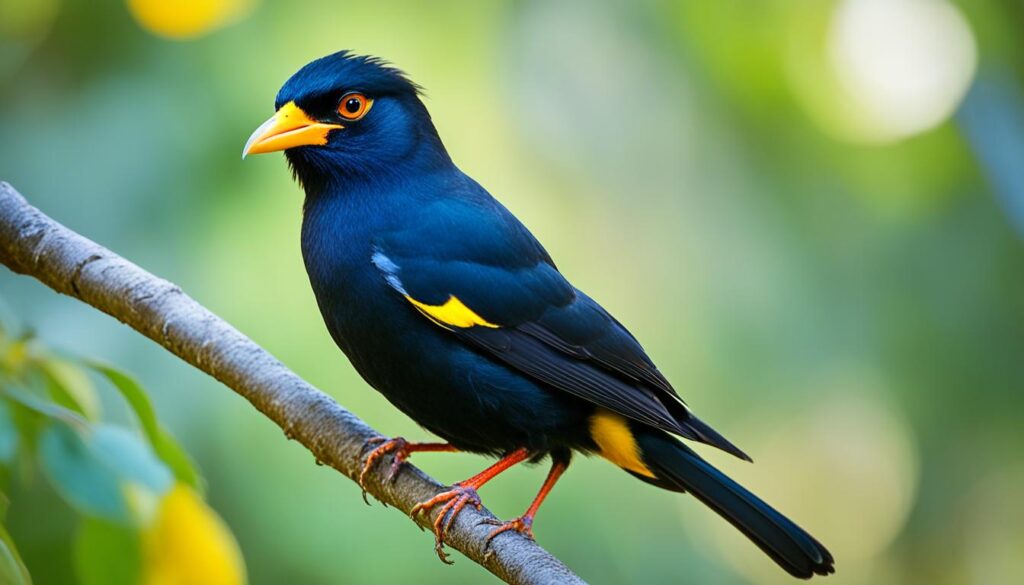
Conclusion
The avian world boasts an impressive array of accomplished talkers and mimics, showcasing the remarkable ability of birds to replicate a wide range of sounds, including human speech. From the masterful Northern Mockingbirds and Brown Thrashers of North America to the accomplished parrots and Hill Mynas of the Old and New Worlds, the diversity and complexity of bird vocalization continue to fascinate researchers and birdwatchers alike.
The unique anatomical and cognitive adaptations of these talking birds, as well as their social and environmental factors, contribute to their exceptional vocal abilities. African Grey Parrots, Budgerigars, and Yellow-Naped Amazon parrots have demonstrated the ability to learn hundreds, if not thousands, of words, setting new standards for avian linguistic prowess.
As we delve deeper into the understanding of vocal mimicry in the avian kingdom, the remarkable capabilities of our feathered friends continue to captivate and inspire. Whether it’s the aristocratic Indian Ringneck Parakeets, the clear-speaking Eclectus Parrots, or the legendary Hill Mynas, the world of talking birds offers a rich tapestry of natural wonders, showcasing the incredible diversity and adaptability of life on our planet.
FAQ
What are some of the best talking birds?
Some of the best talking birds include parrots, such as African Gray Parrots and Amazon Parrots, as well as mynas like the Hill Myna. Other impressive vocal mimics are Northern Mockingbirds, Brown Thrashers, and European Starlings.
What makes parrots such accomplished talkers?
Parrots have a unique vocal anatomy, with a single syrinx similar to the human larynx, which allows for greater flexibility and control in producing a wide range of vocalizations. They also possess advanced cognitive abilities that contribute to their talent for mimicry and speech acquisition.
Why are Northern Mockingbirds considered the “poets” of the avian world?
Northern Mockingbirds are renowned for their exceptional mimicry abilities, earning them the name “polyglottos” or “many-tongued.” These birds can imitate the calls of over 200 different species, as well as a variety of non-avian sounds, incorporating their diverse repertoire into their energetic and melodic songs.
How do the mimicry abilities of Lyrebirds and Australian Magpies differ?
Lyrebirds are known for their “impressionistic” mimicry style, capturing the essence of the sounds they reproduce rather than precisely replicating them. In contrast, the Australian Magpie is praised for its more “realistic” approach to vocal imitation, characterized by a high level of accuracy and attention to detail.
Can wild birds, such as crows and ravens, also mimic human speech?
Yes, several members of the corvid family, including Ravens, have demonstrated the ability to mimic human speech, even in the wild. While the best talking crows are often found in captivity, wild Ravens have also been observed incorporating human words and phrases into their vocal repertoire.
Which bird is considered the world’s greatest mimic?
The Hill Myna, a member of the starling family, is often considered the best talking bird and the world’s greatest mimic. These birds are renowned for their ability to learn and reproduce human speech with exceptional clarity, with some individuals said to be able to develop vocabularies of up to 100 words.
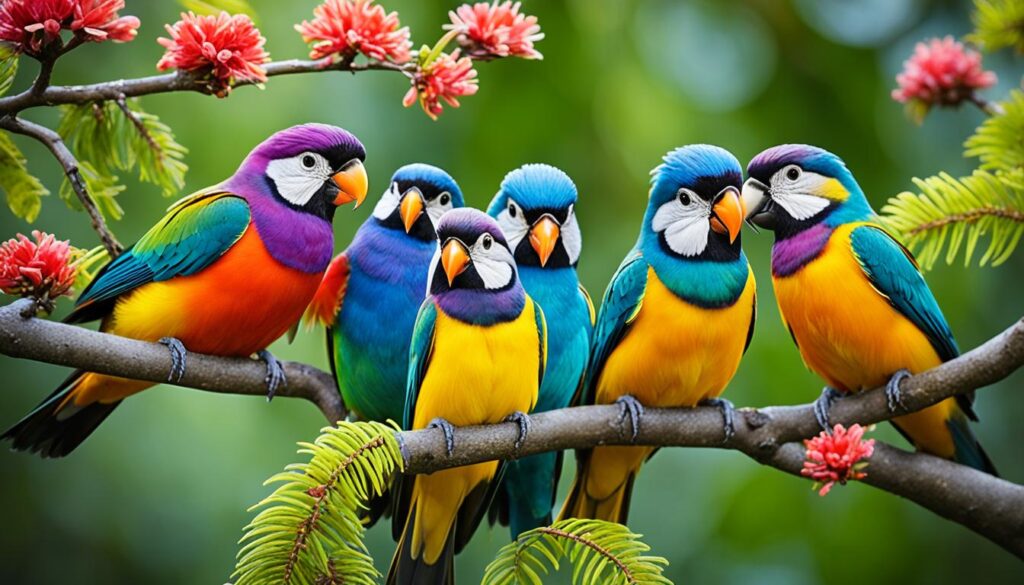

It’s appropriate time to make some plans for the future and it’s time to be happy.
I have read this post and if I could I desire to suggest you some
interesting things or tips. Perhaps you could write next articles referring to this
article. I wish to read even more things about it!
My web-site: nordvpn coupons inspiresensation (tinyurl.com)